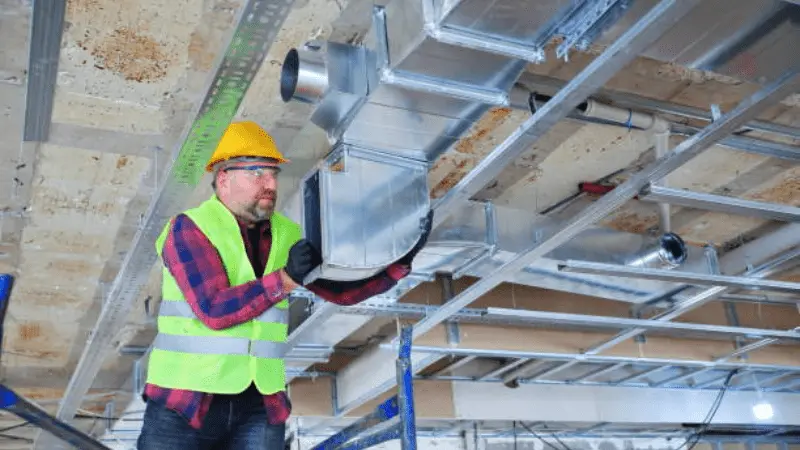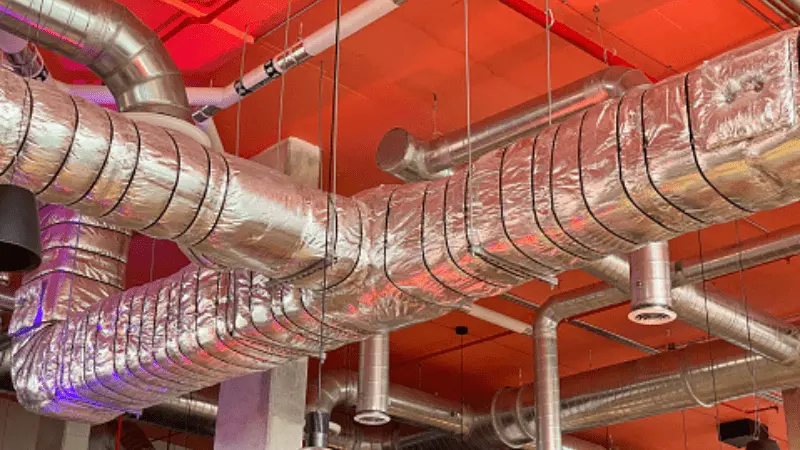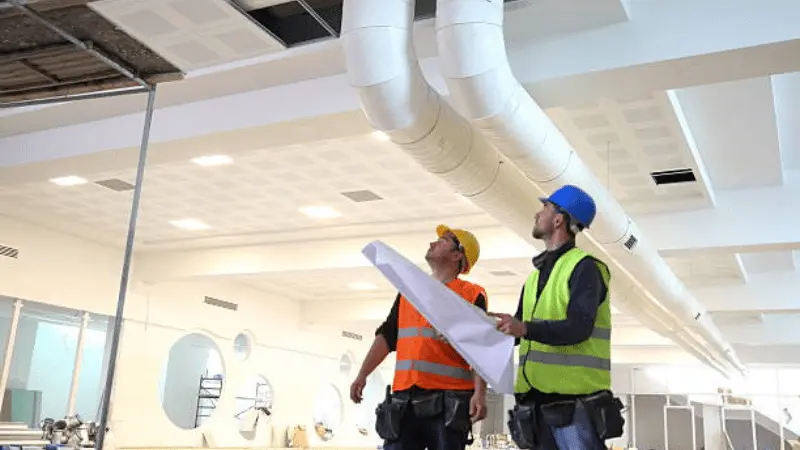Introduction:
The Duct may begin to make vibrating, buzzing, and even hammering noises as it warms up the ductwork to provide comfort to your residence or office space. It is irritating when they sound like anything. There are several creative ways to quiet the loud ducts. How to soundproof duct or HVAC? In this article, we will discuss the ways that how you can get rid of noisy air ducts easily.
It’s one thing to keep the ducts quiet. However, you must regularly maintain the ducting to prevent that from making random noises. Have you previously experienced unwanted noise from your HVAC and air conditioning duct? Here we will go through some Simple methods to soundproof ductwork.

Why soundproof duct or HVAC?
HVAC systems enable us to maintain pleasing environment temperatures and humidity. Air ducts force the flow of air, which can generate a significant degree of annoying noise. When the furnace and air compressor generate vibrations, similarly to the air traveling through the air ducts. All of these soundwaves cause noise, which can disturb our sleep and efficiency at work.
We can reduce stress and create a much more energy-efficient system by simply taking a few simple steps. You can substantially reduce noise also while cutting costs on your electricity bill with a few simple things and knowing how to soundproof HVAC systems. A duct with more edges and guides absorbs sound far better than a simple and straight duct. The flexible duct with many bends reduces the volume of sound.
How To Soundproof Duct or HVAC?
It’s not difficult to learn how to soundproof ductwork or HVAC systems, and it can help you get rid of a lot of annoying noises. If you have been disturbed by the noise of your loud ducting system, you should know the reasons for the noise and how easily you can minimize them. Here I am listed some easy methods to reduce duct noises.
1. Managing noisy furnaces and air conditioners:
The device that provides heat or air conditioning is among the primary noise generators in a ducting system. When switching on those devices, the fans begin to spin, and the force they generate causes sound waves that extend to go far away from the device. You must separate the machine to prevent the vibrations from which they are generated.
2. Install a shock-absorbing bracket beneath the device:
A significant amount of vibrations can flow easily from your heating system or AC device to the ground where it is located. It can cause undesirable noise as well as irritating shock waves that disrupt daily tasks. Putting the device on a bracket or shock absorption unit, vibrations can be massively reduced.

3. Enclose the unit with sound-absorbing components:
If you intend to achieve an excellent level of soundproofing, enclose the device itself with sound-dampening substances. Several duct sound-canceling materials are simple to use, and you won’t require to hire someone to place it. Properly cut into the desired size, and stick it to the duct’s outer surface.

4. Soundproof duct or HVAC; Make an HVAC enclosure:
You can construct a closet to enclose the device. This will hide the device and create insulation in the HVAC. That will absorb vibrations and noise before they exit the space.
Build your closet with thick walls and a heavy gate. The HVAC enclosure material should be thick enough to absorb vibrations while also being safe enough to protect the unit. As vibrations can move through any area in which air can transfer, the closer you seal the better.

5. Replace an old duct system:
If the ducting is excessively noisy, now is the time to replace it. The new system is much quieter than the old one, and it also saves a lot of energy. Partially replacing may reduce some noise.
6. Placement of the duct:
HVAC systems can be extremely noisy because they are built with thin metal ductwork that spans the entire length of your home or business. To reduce noise, the placement of the duct is important.

7. Ensure that your ducts are properly insulated:
An excellent insulation material must be absorbent enough to absorb vibrations while also being non-toxic. Also consider the insulating material’s fire, moisture, germ, and corrosion resistance properties.

8. Soundproof duct or HVAC; Use duct silencers:
Duct silencers are noise baffles for air ducts that are generally installed between the machine and the ductwork to avoid noises from accessing the ducts and passing into rooms.
9. Set up flexible ducts:
Since a flexible duct is bendable, it can aid in minimizing the amount of noise that releases out of an air duct. Adjustable ducts work by forming curves in the duct to reduce noise. Because sound is usually absorbed each moment it strikes a curve.

10. Enhanced Acoustic Vents:
It appears to be an ordinary air vent but includes an acoustic noise canceller. Acoustic Air Vents are created to allow air circulation across a wall; they are equipped with a noise-absorbing outer layer that significantly minimizes noise entry across the vent without lowering the flow of air.
This is higher in price than the muffler-style silencer which runs straight just after the blower. This type of air vent will only safeguard one room from the unnecessary sound.

11. Using Soffit vents:
Soffit vents that absorb noise assist with ducks. You will notice a significant decrease in noise in a relatively short period of time if the appropriate materials are used.
Soffits are made of grass board and have insulation. It can be used as extra layers of drywall. It is a more advanced option, but it is surely worth using.
12. Sound Baffles:
If you want to soundproof an air duct, you can also use a sound baffle. A baffle is basically a box that allows noises to walk a bit further to aid in absorption.
When the wave reaches the people within the room, it is massively diminished, and it may be a method that works. One such product is applied to the inner side of the ducts, and vibrations are reduced significantly.
13. Hire a professional:
It is very good to recruit professionals. If you don’t want experiments, or if the dimensions of the duct will require big changes, then seeking expert help may be the right approach. An expert will be able to hear your specific needs and recommend the best technique.

Soundproof duct or HVAC; Conclusion:
I hope now you got the answer to your question “How To Soundproof Ductw or HVAC?”. Also, you understand the fundamentals of soundproofing HVAC systems. Now it’s up to you how you’ll address your duct noise issues. Every duct system is different from other ones, so ask the professionals if you’ve any doubts.
Soundproofing a duct can be simple or complex, depending on the setup and its design. This is particularly the case for HVAC systems, which are not only simple air vents. Prior to getting started, figure out the main issue. If you don’t know the exact problem, you are simply wasting your time.
